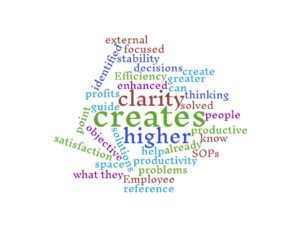This article is a summary of a TPI Fireside Chat episode, where our CEO & Founder Scott Tetz breaks down why the “old way” of running your business, might not cut it anymore.
I had this argument with my dad about the salvage yard I worked at: The computer has to help more than it hinders you. If it doesn’t do that, then don’t use one. That doesn’t mean try and keep all your information inside your head either. We don’t have the power of the human brain yet in a computer, so you can throw that idea of Artificial Intelligence running your yard out the window. But what we do have is the ability to ease our troubles by using things like computers to improve our day-to-day business.
When it comes to using technology to improve your business, maybe you’re on board to use yard-management software like TPI, but you’ve got a couple of guys that are just like, “no, I’m not going to do that.”. Unless they change their mind, it wouldn’t be worth it for you to embrace the change. You all need to be on the same page, committed to the same process. You all need to look at your current operations and go, man, there’s got to be a better way of doing this.
That was the whole reason why I wanted to build TPI. Because I watched my dad go through these cycles all the time. High sales? My dad would go on a trip. Sales would drop off, he’d come back and he’d be all mad. Then sales would go up again.

He knew where everything was. He knew what fit what, he knew what to charge for it. So if you didn’t have that information, then it took you three times longer to do anything. When you lose time and info, of course the sales are going to go down.
So how do we extract all that knowledge out of my dad’s brain to get it into the computer, so that when he goes away, the sales don’t go down? That’s what we’re trying to do in the salvage business. I’m not going to lie to anybody. The computer system can’t replace somebody with 40 years of knowledge. It just can’t. But what it can do, is scale your business sustainably.
This doesn’t happen overnight, but the knowledge that you have, you can slowly feed the computer system so that your counter guys can start to learn. And let’s face it, the employment situation in North America, it’s horrendous. You’re going to have turnover. If you don’t have that knowledge, and you can’t bring in a guy from the street with no heavy duty truck parts knowledge and put him to work, you’re in trouble.
That’s where we have to be as an industry. If we’re not there as an industry, we’re in big trouble. Because no one has the loyalty to stay at a company for any longer than a couple of years it seems. If we don’t start working together to feed the computers the necessary knowledge so you can pull people in, then running your business is going to get tougher and tougher.


